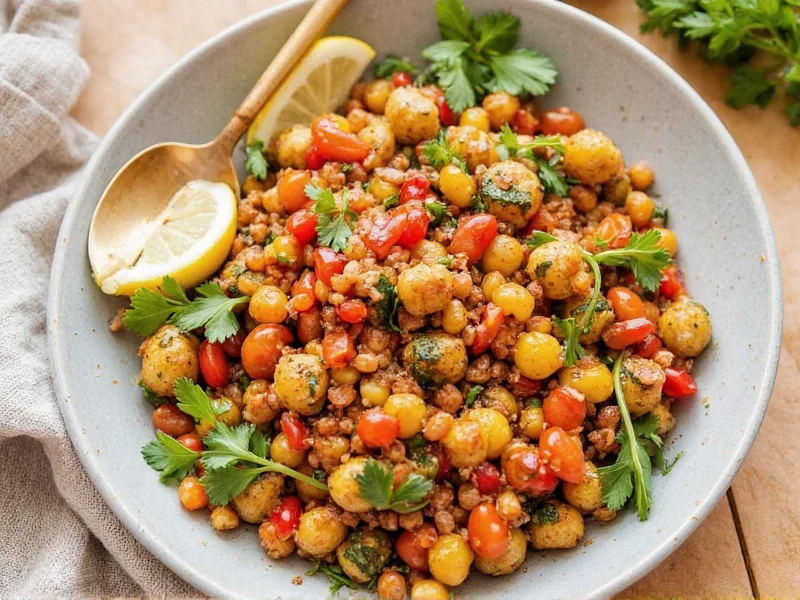When your recipe calls for summer savory but your spice rack comes up empty, knowing reliable substitutes can save your dish. This versatile herb with its delicate balance of peppery, pine-like, and slightly sweet notes enhances everything from bean salads to roasted meats. Understanding proper alternatives ensures your culinary creations maintain complexity without compromising flavor integrity.
Why Substitute Summer Savory?
Summer savory (Satureja hortensis) belongs to the mint family and offers a milder flavor profile compared to its winter counterpart. Many home cooks seek summer savory replacements due to seasonal availability issues, regional scarcity, or simply running out mid-recipe. Unlike winter savory's robust, peppery punch, summer savory delivers subtle complexity that enhances rather than dominates dishes—particularly bean preparations, stuffings, and vegetable medleys.
Top Summer Savory Alternatives
Thyme: The Versatile Stand-In
Thyme makes an excellent summer savory substitute with its earthy, slightly minty flavor profile. When replacing fresh summer savory with fresh thyme, maintain a 1:1 ratio. For dried versions, use equal parts since both herbs intensify similarly when dried. Thyme works particularly well in summer savory substitute for beans applications, maintaining the dish's herbal complexity without overpowering.
Marjoram: The Closest Flavor Match
Marjoram's sweet, floral notes with citrus undertones most closely mirror summer savory's delicate profile. Use fresh marjoram in a 1:1 ratio for fresh summer savory. When working with dried versions, maintain equal measurements. This best herb alternative to summer savory shines in tomato-based dishes, grilled vegetables, and poultry recipes where subtlety matters.
Winter Savory: The Bold Replacement
Winter savory (Satureja montana) shares botanical lineage but delivers a more intense, peppery flavor. To avoid overwhelming your dish, use a 1.5:1 ratio (1.5 parts summer savory to 1 part winter savory). This summer savory replacement in cooking works best in heartier dishes like bean soups, sausages, and winter stews where stronger flavors complement the ingredients.
Herbes de Provence: The Convenient Blend
This classic French herb mixture typically contains marjoram, thyme, rosemary, and oregano—making it a practical fresh summer savory alternative. Use 1.5 teaspoons of Herbes de Provence for every teaspoon of summer savory required. The blend's complexity works well in Mediterranean dishes, roasted vegetables, and tomato sauces.
| Alternative | Fresh Ratio | Dried Ratio | Best For | Flavor Notes |
|---|---|---|---|---|
| Thyme | 1:1 | 1:1 | Bean dishes, roasted meats | Earthy, slightly minty |
| Marjoram | 1:1 | 1:1 | Tomato sauces, grilled vegetables | Sweet, floral, citrus notes |
| Winter Savory | 1.5:1 | 1.5:1 | Hearty stews, bean soups | Peppery, robust |
| Herbes de Provence | 1.5:1 | 1.5:1 | Mediterranean dishes, roasted veggies | Complex herbal blend |
| Sage | 0.5:1 | 0.5:1 | Poultry, stuffing | Earthy, slightly camphorous |
Specialized Substitution Guidance
Understanding context matters when selecting a summer savory substitute for specific recipes. For delicate bean salads, marjoram preserves summer savory's light touch. When preparing hearty winter stews, winter savory's intensity creates satisfying depth. In French cuisine applications, Herbes de Provence maintains regional authenticity.
For dried summer savory substitute ratio adjustments, remember dried herbs generally require less quantity than fresh—typically one-third the amount. When substituting dried herbs for fresh summer savory, use one-third the specified quantity. Conversely, when replacing dried summer savory with fresh alternatives, triple the amount.
When to Avoid Certain Substitutes
While oregano shares some flavor characteristics, its pungent, slightly bitter notes make it unsuitable as a primary summer savory replacement in most applications. Similarly, rosemary's strong pine flavor overwhelms dishes where summer savory's subtlety shines. Reserve these stronger herbs for Mediterranean dishes specifically designed to feature their distinctive profiles.
Practical Application Tips
Add herbal substitutes at appropriate cooking stages—delicate herbs like marjoram benefit from later addition to preserve flavor, while heartier thyme withstands longer cooking times. When experimenting with summer savory replacement in cooking, start with smaller quantities and adjust to taste, especially when using more potent alternatives like winter savory.
Creating Your Own Custom Blend
For frequent summer savory users, create a personalized substitute blend: combine two parts thyme, one part marjoram, and a pinch of sage. Store in an airtight container away from light. This custom mix provides consistent flavor when fresh summer savory isn't available and serves as a reliable fresh summer savory alternative throughout the year.
What's the best summer savory substitute for bean dishes?
Thyme works exceptionally well as a summer savory substitute for bean dishes, maintaining the earthy complexity without overpowering the delicate bean flavor. Use fresh thyme in a 1:1 ratio with fresh summer savory, or dried thyme at equal measurements to dried summer savory.
Can I use winter savory instead of summer savory?
Yes, but adjust the quantity. Winter savory has a stronger, more peppery flavor than summer savory. Use a 1.5:1 ratio (1.5 parts summer savory to 1 part winter savory) to prevent overpowering your dish. This works best in heartier recipes like stews and bean soups.
How do I substitute dried herbs for fresh summer savory?
When replacing fresh summer savory with dried alternatives, use one-third the amount specified. For example, if a recipe calls for 1 tablespoon fresh summer savory, use 1 teaspoon of dried thyme or marjoram. Remember that dried herbs have concentrated flavor compared to fresh.
Is marjoram the same as summer savory?
While marjoram and summer savory share some flavor characteristics, they are different herbs. Marjoram has sweeter, more floral notes with citrus undertones, while summer savory offers a more peppery, pine-like flavor. Marjoram serves as the closest flavor match and can be used in a 1:1 substitution ratio.
Can I use oregano as a summer savory substitute?
Oregano makes a marginal substitute only in Mediterranean dishes specifically designed for bold flavors. Its pungent, slightly bitter notes differ significantly from summer savory's delicate profile. For most applications, thyme or marjoram provides better flavor compatibility as a summer savory alternative.











 浙公网安备
33010002000092号
浙公网安备
33010002000092号 浙B2-20120091-4
浙B2-20120091-4